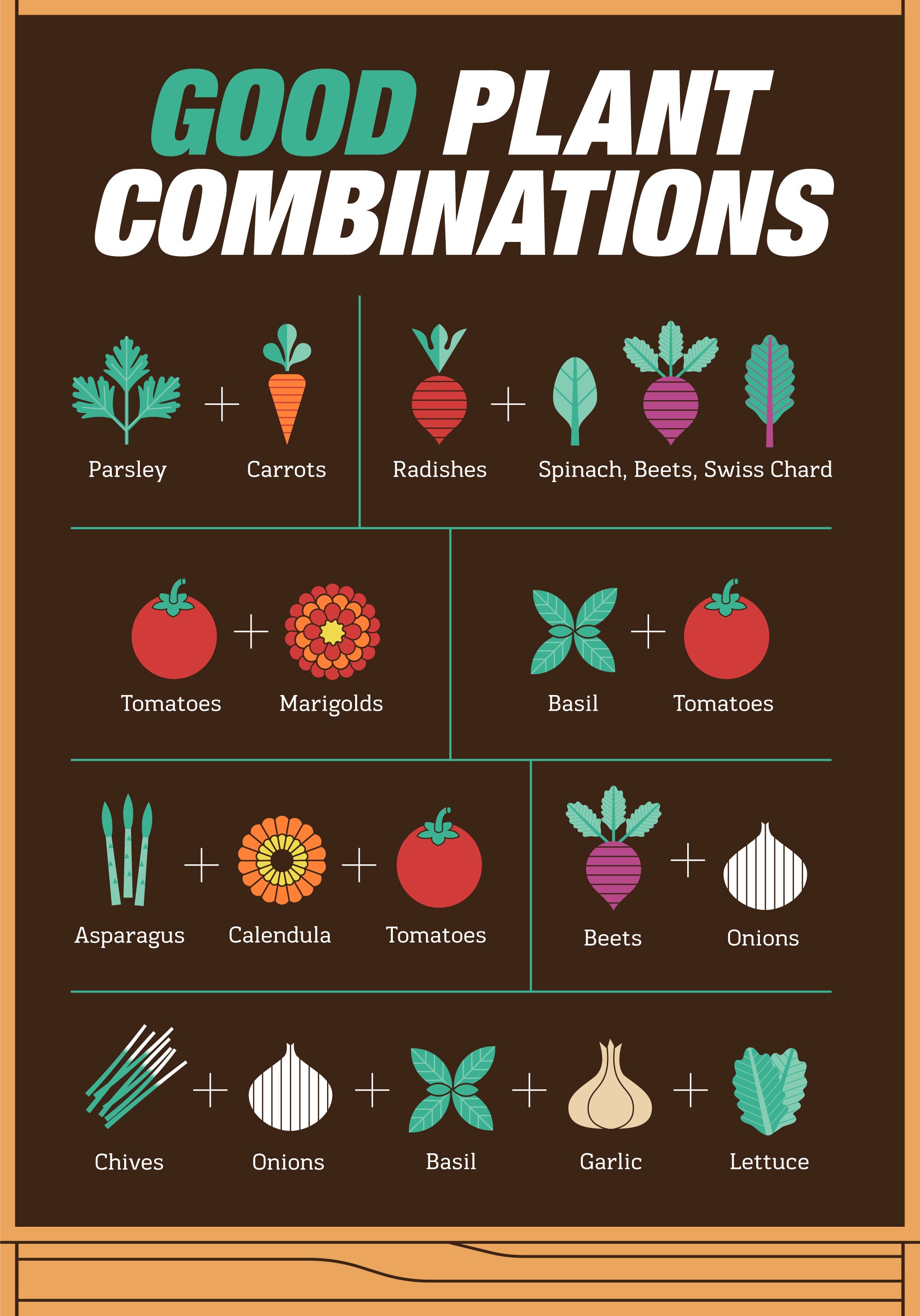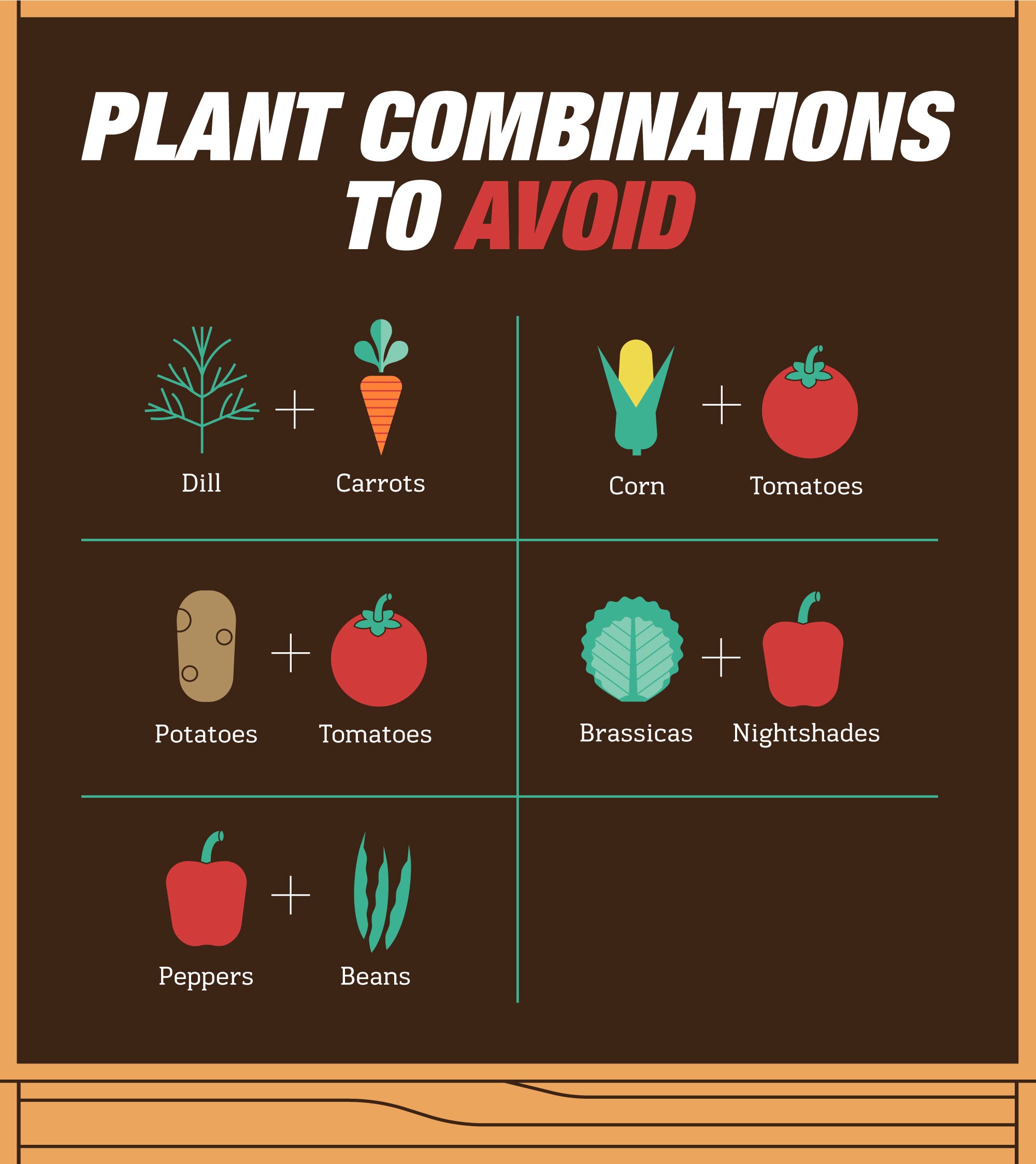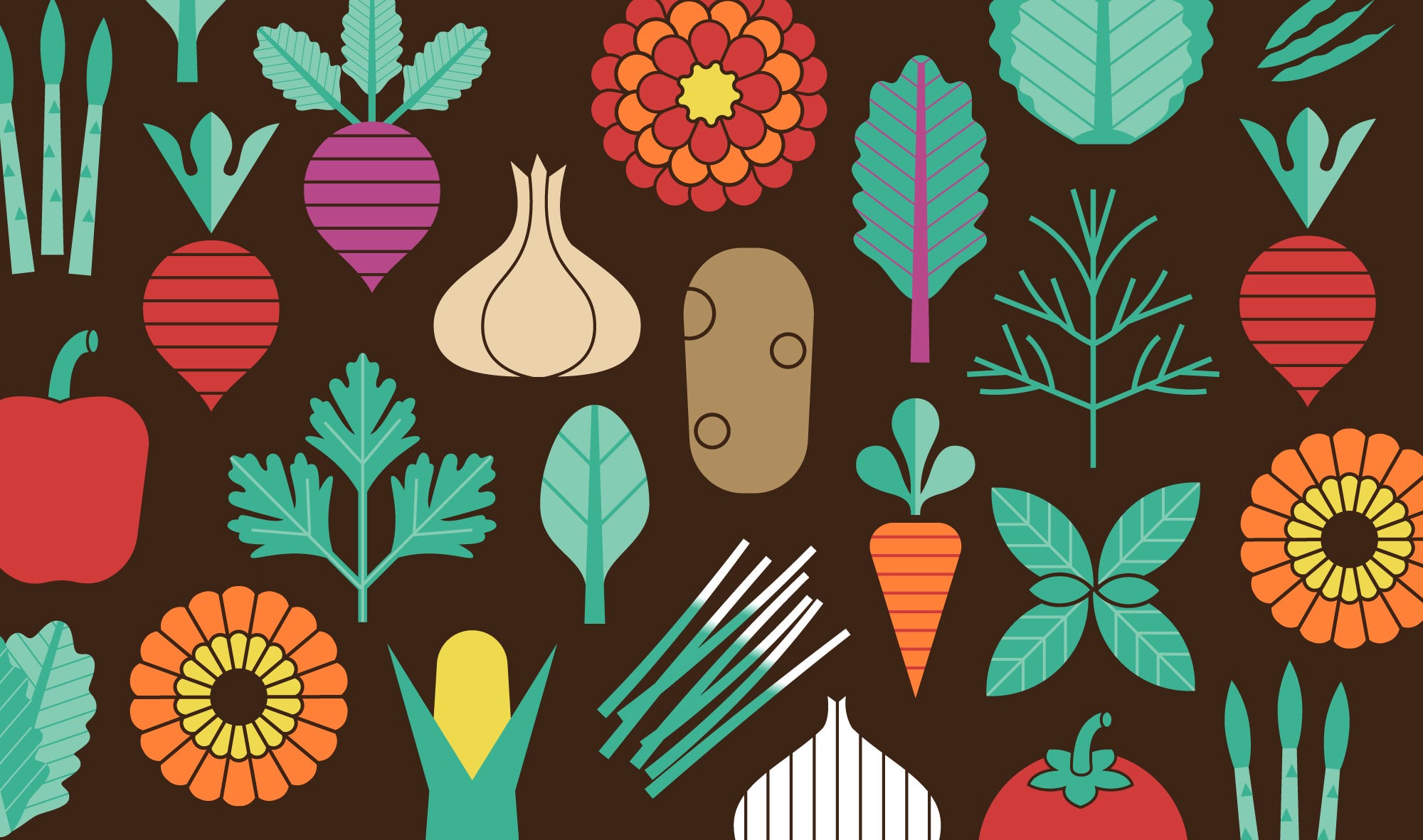

"With the strong foundation of companion planting, you can ensure all plants coexist in harmony and serve helpful functions outside of producing food, like pollinator attraction and boosting soil nutrients.”
A garden is more than a place to grow flowers and food. It’s an opportunity to harness the power of complementary crops to boost your garden’s health, benefit the broader ecosystem, and improve your harvest! We sat down with Aimée Damman, director of marketing and communications at Swansons Nursery in Seattle, to dive deep into the art and joy of what’s popularly called “companion planting,” its many benefits, and how you can easily incorporate it into your Pacific Northwest garden.
What is companion planting?
Companion planting is the practice of growing certain plants—especially food crops—in close proximity to one another to enhance or complement each other’s health and productivity.
Contrary to what many believe, companion planting isn’t just a myth. “Researchers have discovered scientific reasons that show this technique works,” Aimée says. “While much of the initial companion planting knowledge came through trial and error, modern science has proven the advantages of planting certain crops near others.”
The presence of a single plant in your garden can modify environmental variables such as temperature, soil moisture, soil pH, solar radiation availability, and nutrient availability. Some plants release toxic compounds—a process known as allelopathy—that can hinder the growth of other plants.
Benefits of companion planting
“Companion planting can be a great scaffold so that all your plants can thrive,” Aimée says. “You can garden more naturally, reap the benefits of natural pest controls, and help others grow better.” With the strong foundation of companion planting, you can ensure all plants coexist in harmony and serve helpful functions outside of producing food, like pollinator attraction and boosting soil nutrients.
With companion planting, you can also protect your crops from harsh Pacific Northwest weather conditions by positioning taller plants next to shorter ones. “Planting taller crops next to sun-sensitive crops creates a natural shade canopy,” Aimée suggests, “which protects the sun-sensitive crops from overheating or burning.”
Common misconceptions about companion planting
There’s a misconception that companion planting is difficult, or that you need an elaborate plan to do it correctly. While you can plan out your entire garden using a companion planting strategy, you can simply introduce one or a few extra plants to realize the benefits.
Best companion plants for pest control in the Pacific Northwest
If you put a little thought into it, you can intentionally safeguard your crops from pests by incorporating certain plants that attract beneficial insects and help keep harmful pests at bay. Pests can inflict a frustrating amount of damage on a garden. While some eat away at your vegetables, others transmit dangerous diseases that can compromise not only your plant but also the surrounding crops. Other insects act as natural pest deterrents while also helping recycle nutrients, decompose plant waste, aerate the soil, and support the food chain—these are called “beneficial insects.”
“Planting herbs like chamomile or dill near your crops can attract hover flies, parasitic wasps, and ladybugs,” Aimée shares. “These beneficial insects eat garden pests or even lay their larvae into some pests, killing them and preventing future damage.”
You can also plant other herbs and flowers near your garden (but not too close) to lure pests away from the vegetables you want to protect. “Nasturtium will lure aphids. Calendula will lure slugs,” Aimée says. “So if you plant those at a safe distance—ideally a few feet—from the vegetable you want to protect, you will deter that pest population from the crops you care about.”
Establishing a solid arrangement of plants that attract beneficial insects and lure pests away from your garden will pay dividends. “The more you continually think about this in your planning process,” Aimée notes, “you can create habitat that the insects will return to year after year.”
Best companion plants for attracting pollinators
Pollinators are essential in the garden. As they transfer pollen from plant to plant, feasting on the powdery substance, they enable the plants to produce seeds and fruit. Without pollinators, plants won’t reproduce and generate the food we love.
Most (if not all) flowering herbs are excellent for promoting pollinators. A bonus effect is that many also produce oils that deter pesky pests.
Yarrow, a hardy, drought-resistant perennial, is a pollinator magnet with its many clusters of tiny flowers.
Borage, a gorgeous herb with bright blue star flowers, is a bee magnet. (Plus, the flowers are edible—perfect for salads and cocktails!)
Sunflowers are another fun and pretty companion plant to incorporate, especially with kids. Look for sunflowers that aren’t marked “sterile,” so they produce ample seeds. “Once the sunflower head has reached maturity, you can harvest the seeds or lay the head on the ground for squirrels and birds to enjoy,” Aimée says.
Best companion plants for soil health and nutrient absorption
If you want to go the extra mile to enhance your soil’s health outside of supplemental fertilizing, you can plant “nitrogen fixers,” like beans and peas, which restore nitrogen to the soil.
“They’re great to grow after something that’s used up a lot of nutrients,” Aimée says. “Let’s say you grow peas and you pull them out mid-summer when they’re done—that’s a great opportunity to put lettuce in since lettuce loves nitrogen.” The nitrogen left behind from these fixers can even persist year after year.
Most beneficial plant pairings to try
There are so many possibilities when it comes to companion planting in the Pacific Northwest, but Aimée has her favorites. “Marigolds planted with tomatoes are just wonderful,” she says. “Marigolds control a certain nematode that preys on tomatoes, cucumbers, and melons, and they have a strong scent to deter other pests.”
Similarly, parsley paired with carrots is a powerful combination. “Parsley masks the odor of carrots and deters carrot flies,” Aimée explains. “This is especially helpful when you’re thinning or harvesting carrots, because those processes release their scent.”
Other popular pairings include:
- Radishes with crops from the beet family (spinach, beets, and swiss chard): Radishes lure away harmful leafminers, which feed on edible leaves and lead to reduced photosynthetic capacity.
- Basil with tomatoes: Basil will improve the flavor of your tomatoes and help repel aphids, mosquitoes, and the tomato hornworm.
- Asparagus with calendula and tomatoes: Calendula and tomatoes will deter asparagus beetles.
- Beets with onions: Beets add minerals to the soil (as beet leaves are composed of 25 percent magnesium) while onions protect beets against borers and cutworms.
- Chives, onions, basil, and garlic with lettuce: Chives, onion, and garlic deter aphids with their strong aroma, while basil improves the flavor and growth of the lettuce.


Plant combinations to avoid (and why)
While no plant combination is “dangerous” per se, some pairings may impact a plant’s ability to thrive. “Dill and carrots don’t like to be planted next to each other,” Aimée notes, because dill can attract pests like aphids and spider mites, and dill has a pungent smell that can attract carrot flies. Other pairings to avoid include:
- Corn and tomatoes: Both are heavy feeders and can quickly deplete the soil.
- Potatoes and tomatoes: Both are susceptible to the same diseases, such as “blight,” so planting them together can increase the chance of infection.
- Brassicas (broccoli and cabbage) and nightshades (tomatoes and peppers): Both are known to stunt the growth of one another.
- Peppers and beans: Both are susceptible to anthracnose (a fungal infection).
Physical positioning around your crops is another thing to consider when companion planting. For instance, “Basil and marigolds do better in front of tomatoes and peppers vs. in between,” Aimée explains. This is due to the shade cover of tall plants like tomatoes and peppers, which can prevent basil and marigolds from thriving.


How to maximize the yield of your garden
If you’re looking to maximize the yield of your garden with companion planting, it’s best to think about productivity. By considering when your primary vegetable crop will reach its harvest stage, you can plan backwards to incorporate companion plants that best support the vegetable’s growth and provide additional crops you can harvest in the meantime. This practice is called “succession planting.”
“Let’s say you’re growing melon,” Aimée says. “You won’t even plant the melon until late spring, and you know you won’t be harvesting melons until late August since it takes a long time for them to reach maturity. You can maximize productivity by planting fast-growing plants like radishes and lettuces early - before and when you first plant the melon. Radishes go from seed to plant in just 30 days, so you can enjoy a consistent vegetable harvest while you wait for the melon to reach its mature state.”
What is “three sister planting”?
“Three sister planting” is a traditional Iroquois and Cherokee gardening method that perfectly exemplifies why companion planting is so valuable.
“[In three sister planting,] you use corn stalks to support the climbing nature of pole beans,” Aimée explains. “This also restores the nitrogen balance to the soil since beans are nitrogen fixers.”
Then, you plant squash, which is a sprawling crop that stays low to the ground. This keeps the soil and roots shaded while also fending off weeds, which is especially helpful in the height of the summer when these crops grow best. Not only does three sister planting yield a bounty of amazing vegetables, but it also demonstrates the harmony and mutually beneficial relationship of our natural world.
How to start companion planting
Companion planting doesn’t need to be complicated. For anyone starting out, Aimée recommends the simple pairing of any vegetable with a pollinating plant. “Just incorporating a couple of pollinator magnets to the garden is a great way to get started,” she suggests. “There are lots of levels [of companion planting], and it’s not difficult to do at all!”
If you’re ready to start planning your garden, Swansons Nursery makes it easy. Each vegetable is displayed with a helpful sign detailing everything from days to germination to ideal planting seasons—so you can start your garden off right.
We hope you feel inspired and empowered to explore companion planting for your own garden. To read more about this method, head to Swansons Nursery’s blog to read The Secrets of Companion Planting. And check out our other collaboration posts with Swansons Nursery: Plants that Attract Pollinators in the Pacific Northwest and How To Garden in Planter Boxes.



